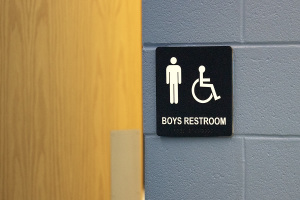Are Republicans Really Doomed Demographically?
Much of the debate about elections today revolves around the "Emerging Democratic Majority" thesis, taken from the 2002 book of the same name. The thesis is pretty straightforward: Because of demographic changes, the GOP is on a path toward irrelevance unless it can remake itself and appeal to the rising electorate.
The theory has congealed into something of conventional wisdom among those who follow politics, at least as it relates to presidential elections. I've long been a skeptic of the argument. It's not that I believe that it is impossible or necessarily wrong. I just think there is insufficient evidence to support a conclusion that we're drifting toward a situation where Republicans are locked out of the White House except in the worst of circumstances.
I've written extensively about this elsewhere, and touched on it here. Because the issue will probably come up repeatedly, especially as we march toward 2016, it seemed like a good chance to lay out some basic arguments in response to the thesis for the Crystal Ball's audience. I'll be using this column, "The GOP's Political Reconstruction Project," published by Pete Wehner in Commentary last month, as an interlocutor. To be clear, I do this not because I have any problems with Wehner - I think he's a very astute analyst - but rather because he does a good job of summarizing many of the more pervasive arguments floating around out there.
But before taking on the affirmative case for the idea that Republicans need to change or go extinct, there is a bit of an affirmative case on my end that needs to be set forth. There are three major points in support of my position.
First, despite demographic changes, elections have continued to behave as if they were referenda on short-term factors such as the economy, wars and presidential scandals. Perhaps the best evidence for this is the continued success of political science models, such as those published frequently here at the Crystal Ball, at predicting these elections.
To my knowledge, none of these models includes a "demographic change" variable. If demographics were a factor pulling United States' elections inexorably leftward, we should see political science models become increasingly biased, as an increasingly salient factor is ignored by the models. They should underpredict Democratic performance by increasing margins.
Yet we don't see this. In 1996, the models underpredicted Bill Clinton's performance; in 2000 they underpredicted George W. Bush's; in 2004 they underpredicted John Kerry's; in 2008 and 2012 they were pretty close to spot-on (they were probably going to underpredict John McCain's performance until the financial collapse hit). It is the same story in midterms: They underpredicted Republican performance in 2002 and 2010, and underpredicted Democrats in 2006.
But do we really need this degree of formalism? Can't we just repeat the oft-cited statistic that Democrats have won the popular vote in five of the last six presidential elections as evidence that things have swung their way?
Not really. The truth of the matter is that if you toss an evenly weighted coin six times, you wouldn't expect things to come up heads-tails-heads-tails-heads-tails; it's actually fairly unlikely that it would play out that neatly. We expect runs and noisiness as a result of randomness.
Since the Republican Party was founded in the mid-1850s, we've had 40 presidential elections. If we had decided those elections by coin toss, we'd expect to see one party or the other to win five of any six elections a total of five times. It has happened four times. You can work through the various iterations (four of 10, one of three), but the correlation between the number of "runs" expected and the number of "runs" we see is high: the r-squared is just north of .96. God may not play dice with the world, but he does seem to play dice with United States elections.
Do I think that elections are decided by chance? Not exactly: We wouldn't be able to predict them reasonably well six months out otherwise. But I do believe that the underlying conditions are effectively randomized, and that because of this, runs of victories aren't evidence of some sort of realignment.
None of this means that elections will continue to behave randomly; an insuperable Democratic majority may yet emerge. It just means that the evidence doesn't support it just yet.
Second, once you account for national effects, the Electoral College hasn't moved appreciably toward Democrats. This was the subject of my previous column, which you can read here.
Third, the idea of long-term majorities simply isn't supported by history. Many readers grew up with the idea of political realignments, where one party becomes the dominant party for a period of 30 years, while the other slides into irrelevance. Indeed, The Emerging Democratic Majority opens with a lengthy discussion of how realignments supposedly work.
The problem is that the concept hasn't held up well to recent scrutiny. Perhaps most importantly, there hasn't been a clear realignment since 1932 (and as Yale's David Mayhew demonstrates, it isn't at all clear that the canonical pre-1932 realignments hold up that well either).
From the point of view of any given election, it will look like the trendlines favor the victorious party. If I were writing this in 1977, I'd be certain that the GOP was headed toward irrelevance. Indeed Everett Carll Ladd, one of the premier psephologists of his time, made just such a prediction. If I were writing in 1961, I would suspect that United States elections were about to become a religious debate between Catholics and Protestants.
And if I were writing in 1925, I would stake my career on three things: That blacks would always give the GOP some 80% of the vote, that the South would always remain Democratic, and that the Democrats were doomed because the white working class had swung toward Republicans and the increasing electoral heft of the North.
I'd also find myself out of work in a matter of years, as working class whites swung back toward Democrats in 1928, blacks swung toward Democrats in 1936, the South began to swing toward Republicans in the 1930s and 40s, and began to grow electorally in the 1950s.
Again, we may see the current demographic trendlines extend themselves indefinitely. We just have to understand that we're predicting a major shift in United States elections if we do so; much of our political science literature will have to be re-written. Maybe we'll have to, but we should be skeptical.
Let's look, then, at some of the positive arguments for the theory as set forth in Wehner's piece.
1. The Blue Wall
"In each of the past six presidential elections, Democrats have carried 18 states and the District of Columbia - which currently total 242 electoral votes - as base states, leaving them only 28 votes short of the 270 necessary to win the White House."
This is undeniably true. But it has to be viewed in light of national conditions. Let's stipulate that state partisanship is relatively stable in the short-to-medium term, and that Republicans aren't likely to win heavily Democratic states in environments that heavily favor Democrats. Moreover, they're unlikely to win moderately Democratic states in environments that moderately favor Democrats.
Now we tie back in to our observation above about the economy and overall political environment. Of the past six elections, which one would we expect Republicans to delve deeply into Democratic territory? We certainly wouldn't expect it in 1992, 1996 or 2008, when the environment was inhospitable for Republicans. The 2000 election is notable because Republicans went deeper into blue territory than the fundamentals would have suggested was likely.
In other words, Republicans have lost marginally blue states in four of the last six elections because the playing field has been horrible for them; you wouldn't expect, say, Washington state to be particularly competitive in 2008. That leaves 2004 and 2012 as years with fairly neutral environments; nationally the GOP lost the latter by four points and won the former by three points. In 2004, a number of "blue wall" states were close: Michigan, Minnesota, Oregon, Pennsylvania and Wisconsin were decided by five points or less. In a marginally better environment, the blue wall would have come tumbling down.
2. Women and the GOP
It's fashionable of late to focus on the gender gap, where Republicans fare worse among women voters than Democrats. Here, we can be brief.
The gender gap giveth, and the gender gap taketh away. It's true that, had the 2012 elections been held exclusively among men, Mitt Romney would have won handily. It is also true, however, that Democrats would have won the House of Representatives in every year from 1994 to 2008, and would have won the presidency in 2000 and 2004, if those elections had been held exclusively among women. In years that are more favorable for Republicans, the Democrats' relative weakness among men becomes a real liability.
To the extent there are such things as "men's issues" and "women's issues," which is grossly overstated, there are inherent tradeoffs. As Democrats focus on the "war on women," they give up opportunities to campaign on issues that resonate more fully with men. Again, recall our point about how elections continue to be predicted well by "fundamentals" models, which suggests that this really has been something of a wash.
3. The Youth Vote and the GOP
Does the GOP have a youth vote problem? Yes, it does. But there are three points to consider here. First, this is largely a function of the GOP's minority voter problem; one of the largest shifts in the electorate from 2008 to 2012 came among younger whites, who switched from being a 54%-44% Obama demographic to a 51%-44% Romney demographic.
Second, we do have precedent for such demographic skews, and it gives Democrats cold comfort. In 1972, the youngest voters actually voted for George McGovern, and in 1976, Jimmy Carter owed his win to his strength among younger voters. Today, of course, Baby Boomers are among the most heavily Republican demographics.
Finally, we should remember that the first crop of Millennials came of political age during the Bush presidency, and during the first Obama campaign. We would expect them, all other things being equal, to be more Democratic than other groups. But we'd also expect the youngest crop of voters, who came of age during the Obama presidency, to be more Republican than the older cohort. The extent to which this is occurring is a matter of some controversy; some data suggest that younger Millennials are only marginally more Republican than older Millennials, while others find that younger Millennials cast their votes for Romney.
4. Minorities and the GOP
This is well-trodden ground: The GOP's future among African Americans and especially Hispanics is not as set in stone as many suggest. As recently as 2010, House Republicans won 38% of the Hispanic vote, when they were embracing none of the policies that Wehner and others have suggested that Republicans must embrace if they are going to remain competitive.
Of course, we also cannot forget the white vote. While I believe that it would be disastrous if the parties became even more racially polarized than they are today, the trendline among whites continues to be toward Republicans - they won a larger share of the white vote in 2010 than any party had in a race for Congress since 1822 - and a recent study suggests that as whites become aware of their increasing minority status, their embrace of conservative political positions increases.
I'm not certain what the future holds for the white vote any more than I am certain what the future holds for the African-American or Hispanic vote. What I am sure of is that you can't do political prognostication well while also ignoring 70% of the electorate. It doesn't take large rightward shifts among whites to offset even substantial demographic growth among today's minorities.
Wehner concludes: "It's an undeniable empirical truth that the GOP coalition is shrinking, and it's shrinking in the aftermath of two fairly decisive defeats, with the latter coming against a president whose policies were judged by many Americans to have been failures."
I don't really think this is undeniable. After all, Obama's vote share in 2012 was less than it was in 2008; the Republican coalition expanded, which is actually unusual when taking on an incumbent - along with Andrew Jackson and Franklin D. Roosevelt (twice), Obama is the only other incumbent president to not win a larger raw share of the popular vote in a reelection win. Republicans are at, or near, all-time highs in their performances in the House, among governors, and in the state legislatures. While it is true that the midterm electorates are different than presidential electorates, they're subject to the same long-term trends and should demonstrate a gradual GOP decline.
For decades, political scientists have argued that elections are largely about a few fundamental factors, and that other factors come out in the proverbial wash. Both parties tend to elect competent candidates who raise a lot of money, commit gaffes and play within the 40-yard lines of American politics. Attempts to add one group to a party's coalition inevitably pushes some other group out, resulting in a regression-to-mean. We might have to abandon this model in the future, but so far the "old" model hasn't had sufficient failures to justify looking elsewhere for explanations of elections.
This column was originally published on the Crystal Ball.





























